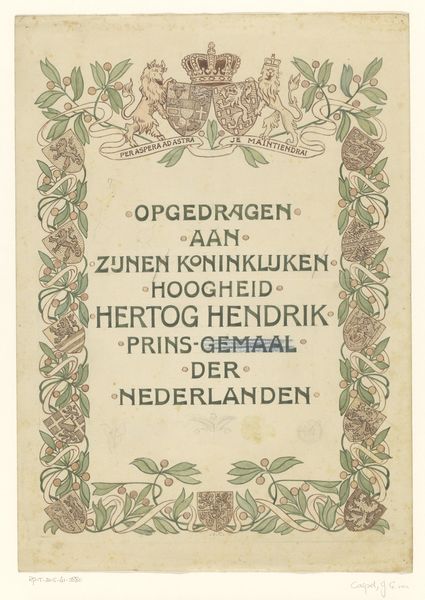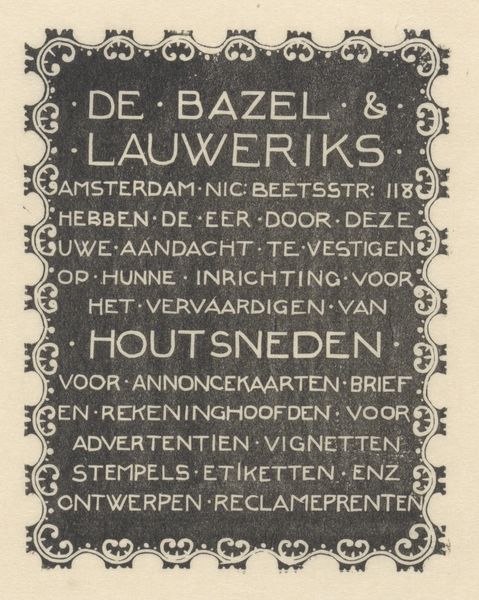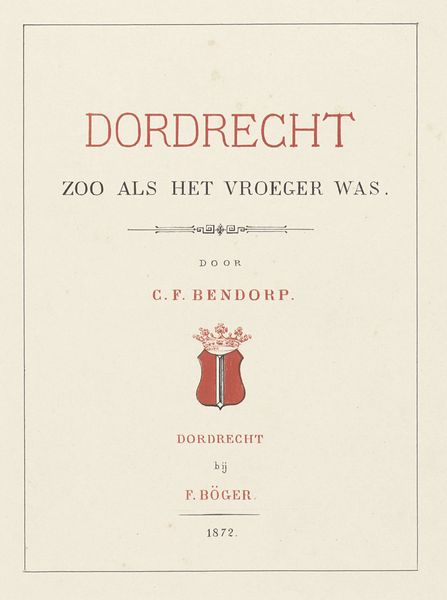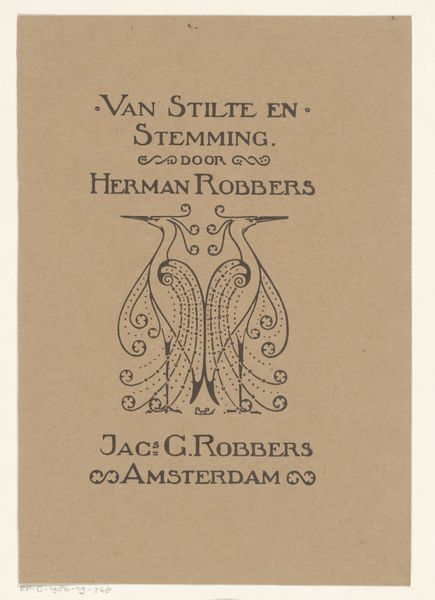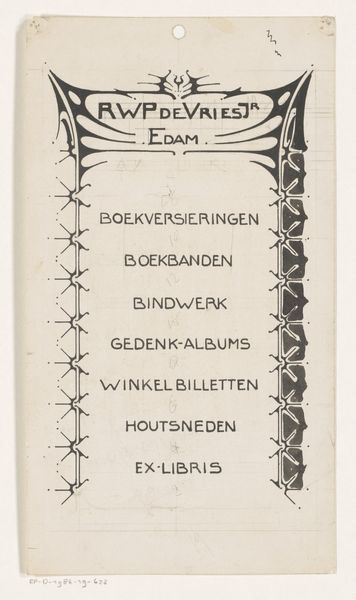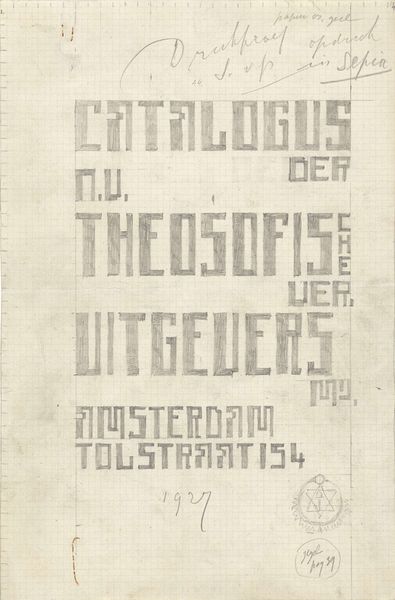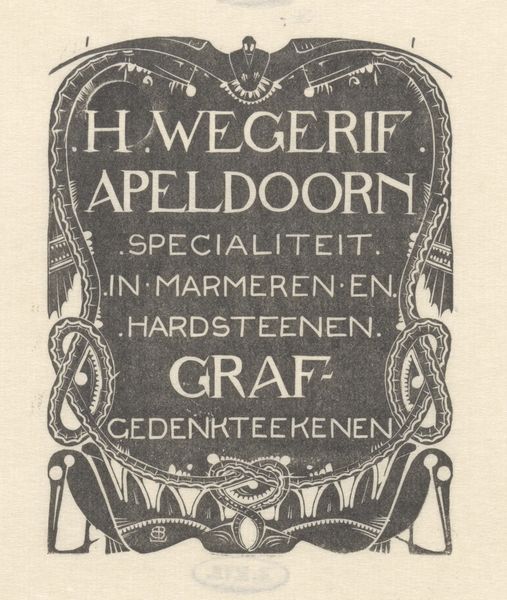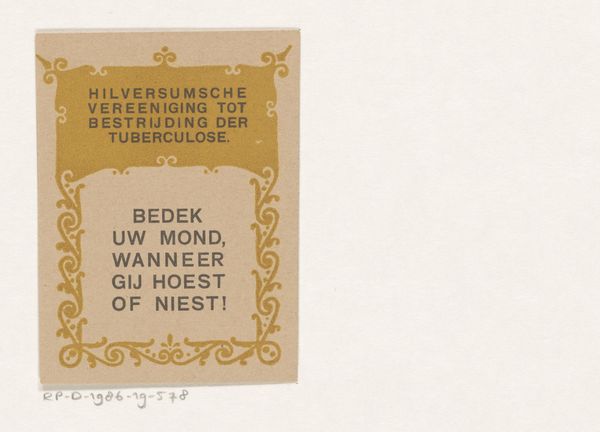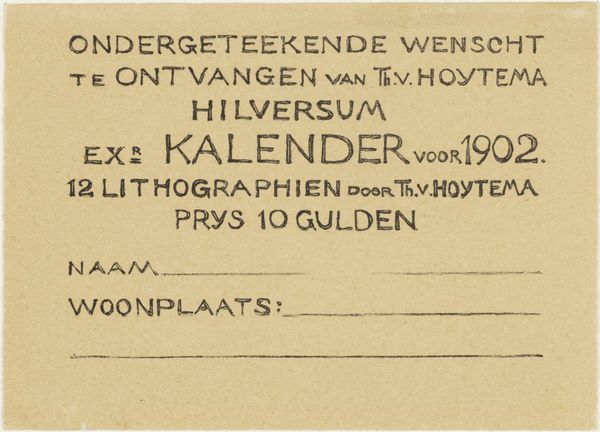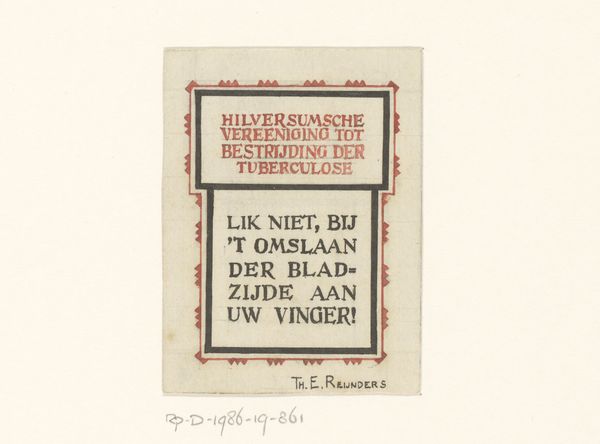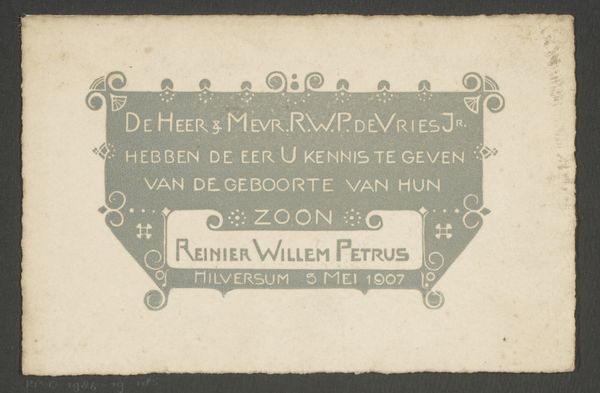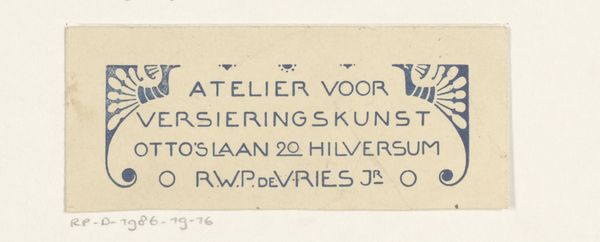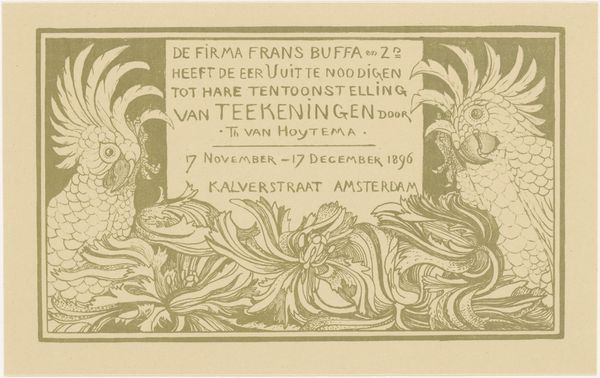
Advertentie van Magazijn De Vlinder te Rotterdam 1884 - 1952
0:00
0:00
graphic-art, print, typography, poster
#
graphic-art
# print
#
typography
#
poster
Dimensions: height 165 mm, width 92 mm
Copyright: Rijks Museum: Open Domain
Editor: This is an advertisement for Magazijn De Vlinder in Rotterdam, dating from 1884 to 1952, created by Reinier Willem Petrus de Vries. It's a print poster with a limited color palette. It's so simple and straightforward, and I’m fascinated by what kind of work went into producing an object for mass consumption. What do you make of it? Curator: Precisely! The means of production are key. Let's consider the typography; each letter was likely individually cast, a labor-intensive process. Then, think about the dissemination: printed in bulk, this poster becomes a tool, shaping consumer desires for damescostuums, regenmantels, and even motormantels – all of these items for a specific market. It speaks volumes about Rotterdam’s industrialization. Where would these garments have been produced? By whom? What kind of lives did those garment workers lead? Editor: That’s really interesting. I was just thinking about the aesthetic design. Curator: And we shouldn't dismiss that either. The so-called "graphic arts," like this print, were often undervalued. Yet this poster reveals careful choices: the color scheme, the typeface, even the stylized "vlinder" (butterfly). Each aspect was intentionally designed to attract consumers and signal the store's brand. What’s fascinating is that these kinds of commercial items were made alongside so-called high art. The production methods were not always so different! Editor: I never considered how the printing of an advertisement would be considered a type of work in itself. Curator: Exactly! It blurs the lines between art, craft, and labor, reminding us that everything is produced in a particular way, and with purpose. Think of how it challenges the high/low art boundary just through material analysis. Editor: This completely changed how I see it! Curator: I’m so glad. There's always more to discover in what appears so simple!
Comments
No comments
Be the first to comment and join the conversation on the ultimate creative platform.
